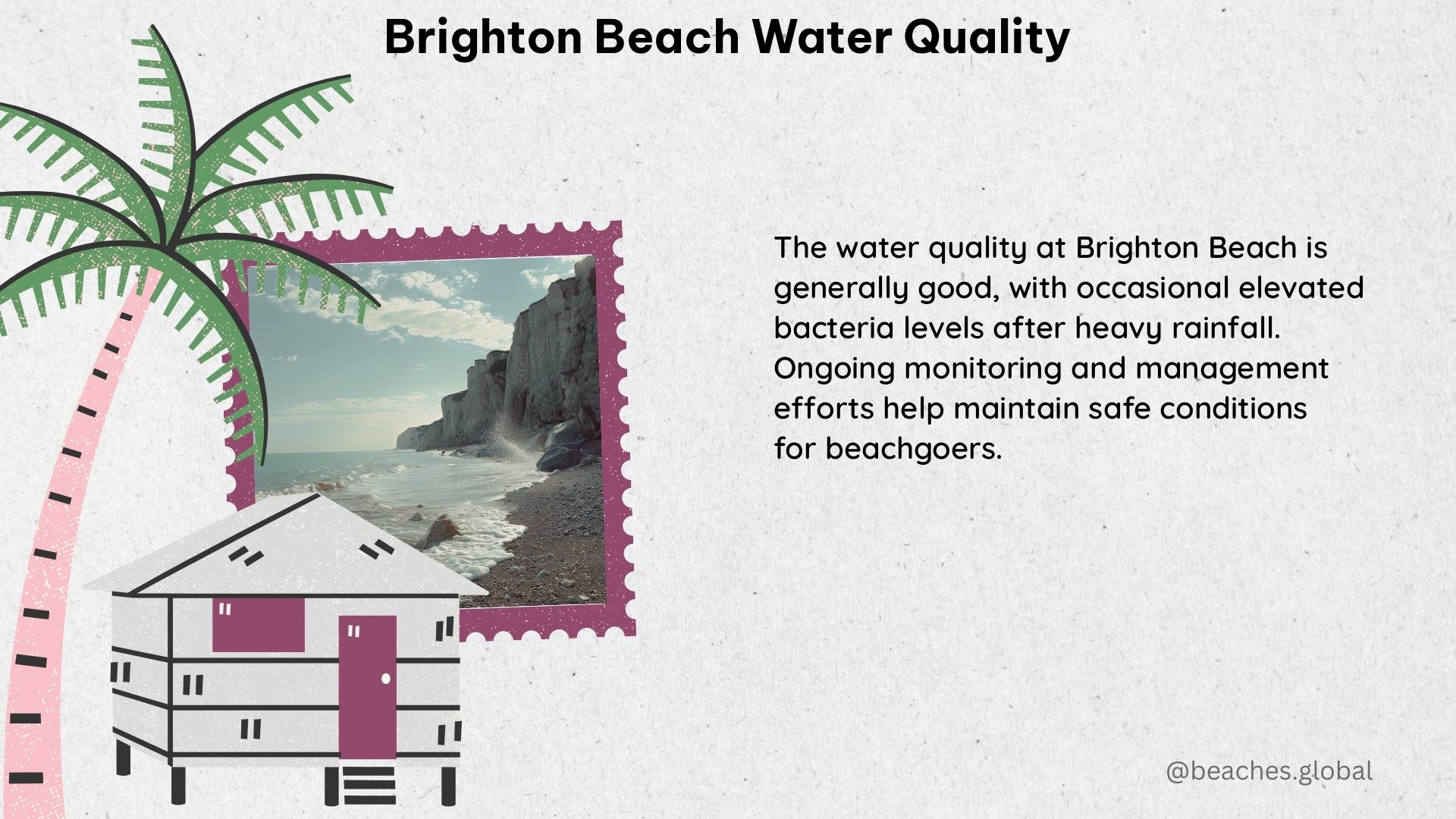Brighton Beach, a popular destination for beachgoers in New York City, is known for its scenic views and lively atmosphere. However, the quality of the water at this beach is a crucial concern for both visitors and local authorities. This blog post will delve into the details of Brighton Beach’s water quality, including monitoring efforts, water quality status, and the ongoing challenges of pollution and sewage overflow.
Monitoring Brighton Beach’s Water Quality
The water quality at Brighton Beach is closely monitored by the New York City Health Department. Throughout the beach season, which typically runs from late May to early September, the department collects water samples at least once a week and tests them for the presence of bacteria, specifically enterococci. This bacteria is used as an indicator of the overall sanitary conditions of the water.
The water quality at Brighton Beach is classified based on these test results, with color-coded signs indicating the current status:
- Green: The geometric mean of the last 5 samples contains less than 35 enterococci per 100 ml of water, and the single sample result is less than 104 enterococci per 100 ml. This indicates that the water is safe for swimming and wading.
- Red: The geometric mean of the last 5 samples contains more than 35 enterococci per 100 ml of water, or the single sample result is equal to or above 104 enterococci per 100 ml. This indicates that the water quality is poor, and swimming and wading are not recommended.
Water Quality Advisories and Beach Closures

When the water quality at Brighton Beach is classified as “Red,” the New York City Health Department issues a water quality advisory. This advisory informs the public that swimming and wading are not recommended due to the elevated levels of bacteria in the water. However, the beach remains open for other activities, such as sunbathing, walking, and picnicking.
In recent years, the water quality at Brighton Beach has been a concern, with the beach occasionally displaying poorer water quality compared to other public beaches in the city. This is often due to pollution carried by rain into the harbor, which can include a mix of sewage, animal waste, and other contaminants.
Pollution and Sewage Overflow Challenges
One of the primary contributors to the water quality issues at Brighton Beach is the problem of combined sewer overflows (CSOs). CSOs occur when heavy rainfall overwhelms the city’s sewer system, causing a mixture of untreated sewage and stormwater to be discharged directly into the surrounding waterways.
According to estimates, the annual volume of raw sewage mixed with polluted runoff discharged into the waters around New York City can range from 11 billion to 30 billion gallons. Environmental groups have been pushing for solutions to this problem, and the city has committed to reducing CSOs, but the issue remains a significant challenge.
Private beaches in Brighton Beach have also consistently displayed poorer water quality compared to public beaches, likely due to the same pollution issues. This highlights the need for comprehensive solutions to address the underlying causes of water quality problems in the area.
Real-Time Water Quality Information
To help beachgoers stay informed about the current water quality status at Brighton Beach, the New York City Health Department provides real-time information on its website. The department’s beach water quality map allows visitors to check the status of different beaches, including Brighton Beach, before planning their visit.
Additionally, the TDS Bot website and the Swim Guide – Main app offer up-to-date information on the water quality at Brighton Beach, with results posted as soon as new test data becomes available.
Conclusion
The water quality at Brighton Beach is a crucial concern for both visitors and local authorities. While the New York City Health Department closely monitors the water and issues advisories when necessary, the ongoing challenges of pollution and sewage overflow continue to impact the beach’s water quality.
Addressing these issues will require a multi-faceted approach, including investments in infrastructure to reduce CSOs, as well as efforts to educate the public and promote sustainable practices. By working together, the community can help ensure that Brighton Beach remains a safe and enjoyable destination for all.
